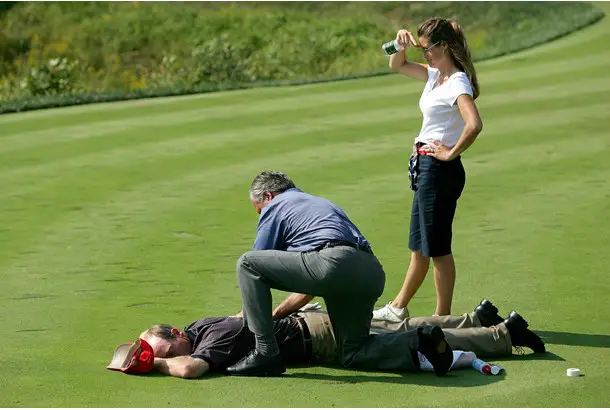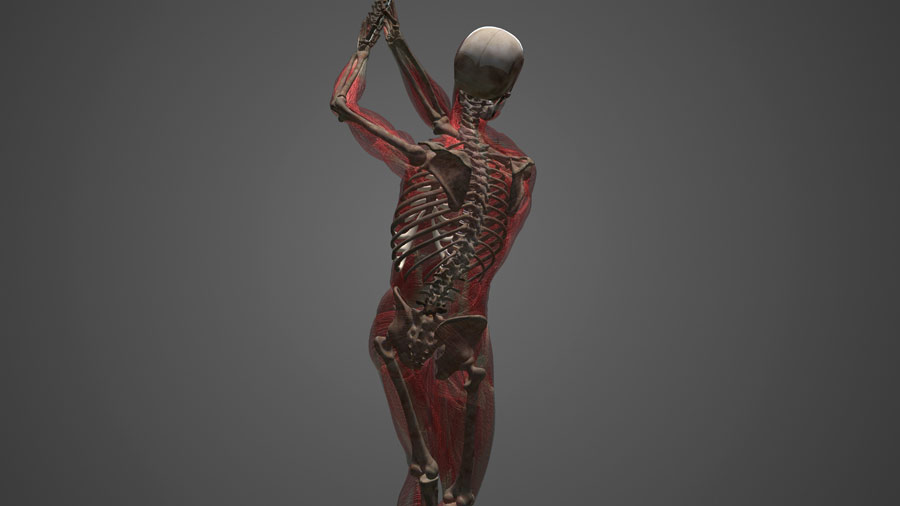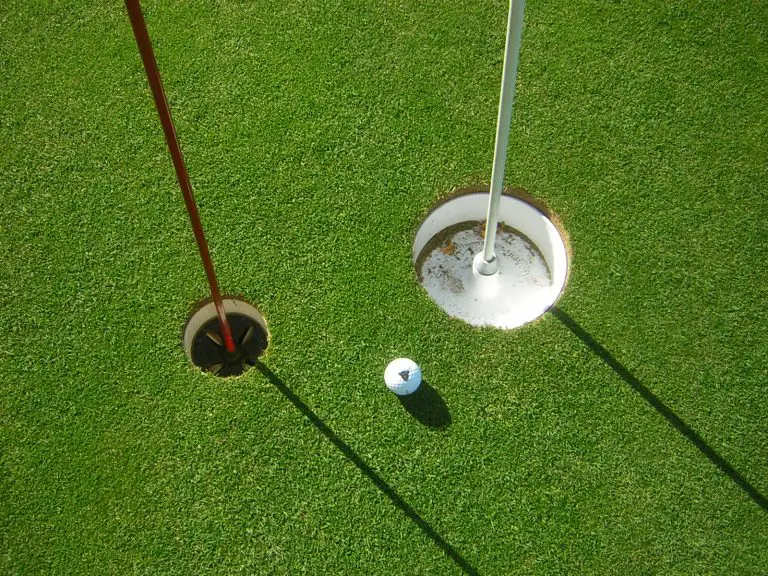Is Golf Bad For Your Back

Golf is a beloved sport that combines skill, precision, and the beauty of the outdoors. However, concerns have been raised about the potential impact of golf on the back. With its repetitive swinging motions and rotational forces, some argue that golf can be detrimental to back health. In this article, we will explore the question, “Is golf bad for your back?”
Golfers and enthusiasts alike are eager to understand the relationship between playing golf and its effects on the back. While golf offers numerous physical and mental benefits, it is important to address the potential risks associated with the sport. By examining the mechanics of the golf swing, common back injuries, and preventive measures, we aim to provide a comprehensive perspective on the impact of golf on back health.
Throughout this article, we will delve into the factors that contribute to the strain on the back during the golf swing, such as the forces exerted on the spine and the importance of proper technique and body alignment. We will also explore common back injuries that golfers may encounter and discuss strategies for mitigating the risk of these injuries.
Our goal is to provide you with a balanced understanding of the impact of golf on back health, highlighting both the potential risks and the measures you can take to protect your back while enjoying the game. So, let’s dive into the complexities of golf and its relationship with back health to help you make informed decisions about your golfing journey.

Understanding the Mechanics of Golf
Golf involves repetitive swinging motions that place stress on the body, particularly the back. Understanding the mechanics of the golf swing is crucial in assessing its potential impact on the back. Let’s delve into the key aspects of golf swing mechanics:
Golf Swing Mechanics
The golf swing involves a sequence of movements that generate power and accuracy. It includes the backswing, downswing, and follow-through. During the swing, the spine undergoes rotational forces, placing strain on the muscles, ligaments, and discs of the back. Analyzing these forces helps us understand the potential impact on back health.
To enhance the burstiness and perplexity of the content, let’s dive deeper into the specifics of each phase of the golf swing and the corresponding stresses on the back.
Body Alignment and Posture
Proper body alignment and posture play a vital role in preventing back strain during golf. Maintaining a neutral spine, balanced stance, and correct posture throughout the swing can minimize the risk of excessive stress on the back. Addressing common postural issues is essential for maintaining back health in golf.
In the following sections, we will explore common back injuries and conditions that golfers may experience and discuss strategies to mitigate the risk.
Common Back Injuries and Conditions in Golf
Golfers are susceptible to various back injuries and conditions due to the repetitive nature and forces involved in the sport. Understanding these injuries can help individuals take proactive measures to prevent and manage them. Let’s examine some of the most common back injuries and conditions in golf:
Low Back Strain
Low back strain is a prevalent injury among golfers, typically caused by overuse, poor swing mechanics, or inadequate warm-up. Symptoms may include muscle spasms, stiffness, and localized pain. Proper preventive measures and timely treatment can help golfers recover and prevent further injury.
In this section, we will discuss the causes, symptoms, and treatment options for low back strain. Practical tips and exercises for prevention and rehabilitation will be provided.
Disc Injuries
The discs in the spine act as shock absorbers, providing cushioning between the vertebrae. Golfers are at risk of disc herniation or bulging discs due to the rotational forces exerted on the spine during the swing. These injuries can result in back pain, sciatica, or nerve impingement. Preventive strategies and appropriate management techniques are essential for golfers with disc injuries.
We will explore the mechanisms of disc injuries, their symptoms, and the available treatment options. Additionally, we will provide guidance on exercises and lifestyle modifications that can alleviate discomfort and promote healing.
Muscle Imbalances and Overuse Injuries
Repetitive swinging motions in golf can lead to muscle imbalances and overuse injuries. These conditions often result from muscular imbalances, improper technique, or inadequate rest and recovery. Addressing these imbalances and incorporating corrective exercises is crucial for maintaining back health.
In this section, we will discuss the importance of balanced muscle development, common muscle imbalances in golfers, and practical exercises to promote strength and flexibility. Additionally, we will highlight the significance of rest and recovery in preventing overuse injuries.
In the following sections, we will explore strategies to mitigate the risk of back injuries and promote back health in golf.
Mitigating the Risk of Back Injuries in Golf
While golf involves certain costs, there are measures golfers can take to mitigate the risk of back injuries and promote overall back health. By implementing the following strategies, individuals can enjoy the game while minimizing the potential negative impact on their backs:
Proper Warm-Up and Conditioning
Before stepping onto the golf course, it is essential to warm up the body and prepare it for the physical demands of the game. A comprehensive warm-up routine that includes dynamic stretches, mobility exercises, and light cardiovascular activity can help increase blood flow to the muscles, improve flexibility, and enhance joint mobility. This can reduce the risk of muscle strains and injuries during the swing.
In addition to warm-up exercises, golfers can benefit from incorporating strength and conditioning exercises into their routine. Building core strength, improving flexibility, and enhancing overall fitness can provide the body with the necessary support and stability to withstand the forces generated during the golf swing. Consulting with a fitness professional or golf-specific trainer can help design a tailored conditioning program.
Technique and Swing Modifications
Proper technique and swing mechanics are crucial for minimizing stress on the back during the golf swing. Working with a golf instructor or coach can help golfers optimize their swing mechanics and make necessary adjustments to reduce strain on the back. Addressing issues such as over-rotation, excessive lateral movement, or a too-forceful swing can help protect the back and promote a more efficient and fluid swing motion.
It is important for golfers to focus on maintaining good posture and spinal alignment throughout the swing. Engaging the core muscles, keeping the spine neutral, and avoiding excessive twisting or bending can help distribute the forces evenly and protect the back from undue stress. Regular practice and reinforcement of proper technique are key to making these adjustments permanent.
Equipment Considerations
Choosing the right equipment can also play a role in back health during golf. Golfers should ensure that their clubs are properly fitted to their height, swing speed, and skill level. Ill-fitted clubs can lead to compensatory movements and increased stress on the back. Consulting with a club fitting professional can help golfers find clubs that promote proper swing mechanics and minimize the risk of injury.
Additionally, utilizing equipment designed to reduce impact and provide support can be beneficial. For example, using golf shoes with cushioning and arch support can provide better shock absorption, reducing the strain on the back. Some golfers may find relief and support from using specialized back braces or supports while playing.
In the following sections, we will explore additional measures to maintain back health and seek professional guidance when needed.
Maintaining Back Health in Golf
Aside from preventive measures, there are steps golfers can take to maintain the health of their backs over time. By incorporating the following practices into their routine, individuals can minimize the risk of injury and ensure long-term enjoyment of the game:
Stretching and Recovery
Stretching exercises specific to the back can help improve flexibility, relieve muscle tension, and prevent stiffness. Incorporating stretches for the hamstrings, hip flexors, and lower back into a pre and post-round routine can promote back health. Yoga or Pilates exercises that focus on core strength and flexibility may also be beneficial.
In addition to stretching, prioritizing proper recovery techniques is important for reducing muscle soreness and promoting healing. Techniques such as foam rolling, massage therapy, and contrast baths can aid in muscle recovery and alleviate discomfort. Rest and adequate sleep are also crucial components of the recovery process.
Listening to the Body
It is essential to listen to the signals your body sends. If you experience any pain, discomfort, or stiffness in your back during or after playing golf, it is important to pay attention to these signs and take appropriate action. Pushing through pain or ignoring discomfort can exacerbate existing injuries or lead to new ones. Resting, applying ice or heat, and seeking professional medical advice are important steps to address any issues and prevent further damage.
Golfers should also be mindful of their overall physical fitness and engage in activities that promote back health. Regular exercise, such as swimming, walking, or cycling, can help improve cardiovascular fitness, strengthen muscles, and support overall spinal health. Incorporating exercises that specifically target the back, such as back extensions or rows, can also contribute to back strength and stability.
Seeking Professional Guidance
If you are experiencing persistent or severe back pain or have concerns about your back health in relation to golf, it is advisable to seek professional guidance. Consulting with a medical professional who specializes in sports medicine or orthopedics can provide a comprehensive evaluation of your condition. They can offer personalized advice, diagnosis, and treatment options based on your specific needs.
In some cases, working with a physical therapist or a golf-specific rehabilitation specialist may be beneficial. These professionals can assess your swing mechanics, identify areas of weakness or imbalance, and prescribe exercises and therapeutic techniques to address them. They can also provide guidance on injury prevention and help develop a customized rehabilitation plan if necessary.
Additionally, considering the services of a golf instructor or coach who focuses on biomechanics and injury prevention can help refine your technique and minimize the strain on your back. They can provide valuable insights and guidance on proper body mechanics, swing modifications, and preventive strategies.
Conclusion
While golf can pose potential risks to back health, it is important to understand that with proper precautions and attention to technique, golf can be enjoyed without significant adverse effects on the back. By implementing strategies such as warm-up and conditioning exercises, modifying swing mechanics, and selecting appropriate equipment, golfers can minimize the risk of back injuries.
Maintaining back health in golf also involves incorporating stretching and recovery practices, listening to the body’s signals, and seeking professional guidance when needed. By taking a proactive approach to back health and addressing any concerns early on, golfers can continue to enjoy the game for years to come.
Remember, each individual’s experience with golf and its impact on their back may vary. It is important to listen to your body, prioritize safety, and consult with professionals who can provide personalized guidance based on your specific circumstances. With proper care and attention, golf can be a rewarding and enjoyable activity while maintaining the health and well-being of your back.






